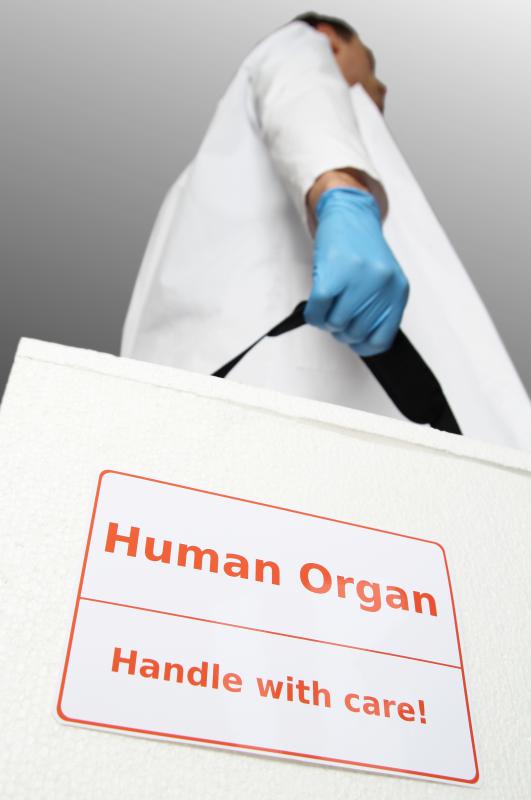At TheHealthBoard, we're committed to delivering accurate, trustworthy information. Our expert-authored content is rigorously fact-checked and sourced from credible authorities. Discover how we uphold the highest standards in providing you with reliable knowledge.
What is the Langerhans Cell?
A Langerhans cell is a specific kind of white blood cell. Found largely in the epidermis, the outer layer of the skin, as well as in lymph nodes, Langerhans cells are an important element of the immune system. They are classified as dendritic cells because they grow projections called dendrites as they develop. Langerhans cells work to prevent infections, and they help trigger immune reactions by interacting with T-cells. The Langerhans cell, like other forms of white blood cells, is produced in the bone marrow.
Under normal conditions, Langerhans cells occur in small numbers, concentrated mostly in the skin, and respond to bacteria and other agents that occur on the skin's surface and can cause infection. In some cases, though, the body produces far too many of this specialized cell, leading to a rare condition called Langerhans cell histiocytosis (LCH). This condition leads to a variety of systematic symptoms and is often difficult to diagnose.

The symptoms and seriousness of Langerhans cell diseases are determined by where the proliferation of the Langerhans cell occurs. If the cells multiply and remain mostly in the skin, the result often is localized to the skin. This disorder occurs most often in younger children, so this can manifest as diaper rashes or other types of rash that do not respond to normal treatment. When the cells migrate to other parts of the body, the symptoms are much more widespread and serious, and the disorder can be life-threatening. Determining the presence of the Langerhans cell in major organs also can be difficult, often requiring biopsy and other complex diagnostic techniques.

LCH is classified as a histiocytosis, a term used to describe diseases that result from overproduction of white blood cells. Other histiocytoses include leukemia and lymphoma. While some doctors consider LCH to be a cancer-type disease because it results from abnormal proliferation of a cell, others consider it to be an autoimmune disorder. It occurs most often in children younger than 10 years old. Treatment varies based on the individual patient's condition, symptoms and age, and it can include steroid treatment as well as chemotherapy and radiation.

Another form of LCH, pulmonary LCH, occurs in adult smokers rather than in children. In this disorder, pulmonary Langerhans cells build up in the lungs, filling air spaces and other small open areas in the lung tissue. Treatment with steroids sometimes is utilized, but the most effective treatment for pulmonary LCH is to stop smoking. In advanced cases, lung transplant might be necessary.
AS FEATURED ON:
AS FEATURED ON:

















Discussion Comments
@SailorJerry - Cancer is generally defined as being a disorder in which cells in the body multiple uncontrollably. In histiocytosis, it's Langerhans cells that do this instead of carcinoma cells (cancer cells that usually have an altered genetic code).
On the other hand, an autoimmune disease involves the body's immune system attacking the body's own tissues. The Langerhans cells are part of the immune system and their over growth causes problems.
So you see, histiocytosis is kind of like cancer and kind of like an autoimmune disease, but not quite either. And obviously, chemo and radiation are cancer treatments, while steroids are often used to treat autoimmune diseases. (Presumably these aren't both used at once, because the combination would kill you! Chemo weakens the immune system and steroids also make you more vulnerable to infection.)
I thought cancer was just cancer. How could this Langerhan cell disease, histiocytosis, be sort of cancer and sort of an autoimmune disease? (I'm not sure I know what an autoimmune disease is, anyway.)
Post your comments